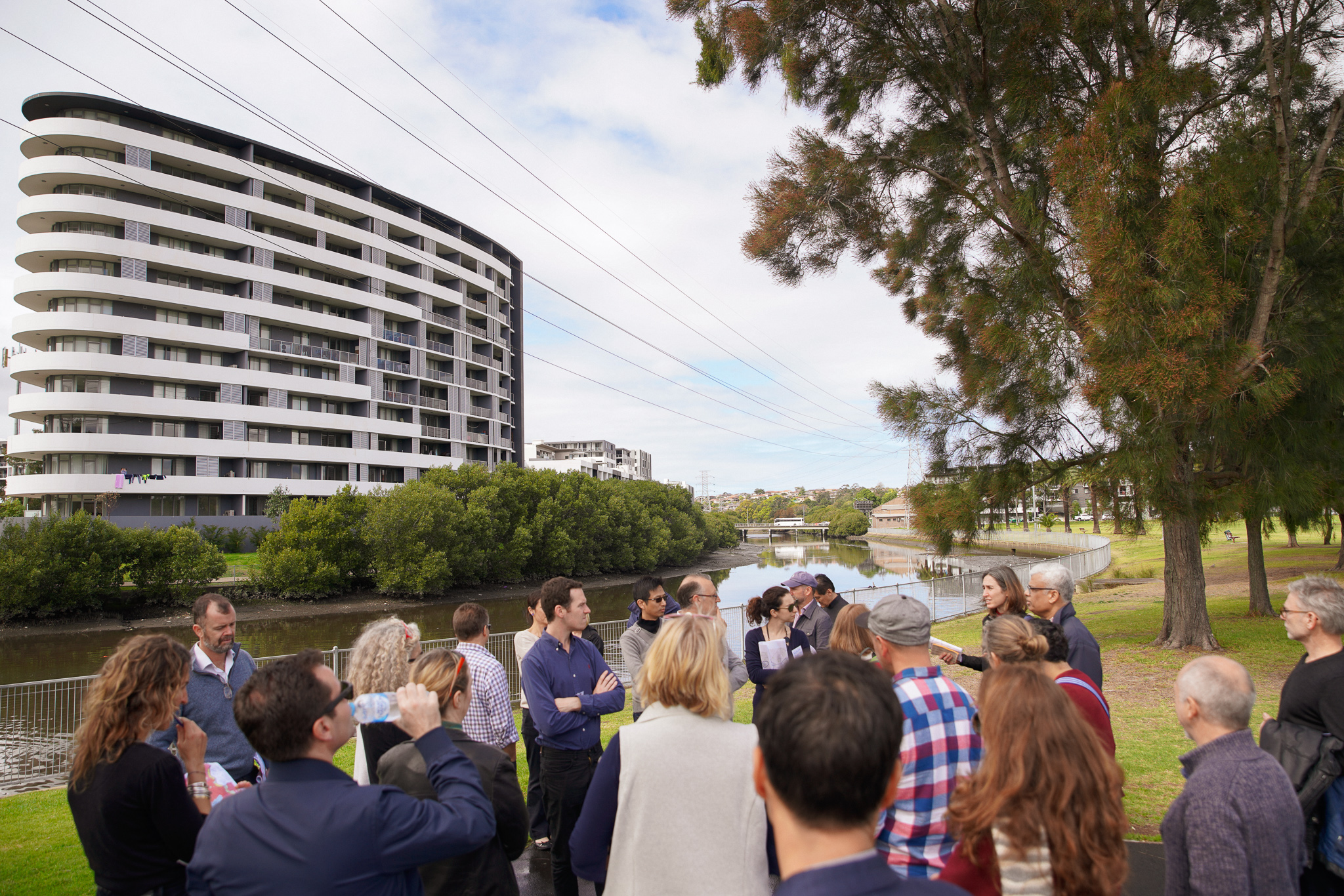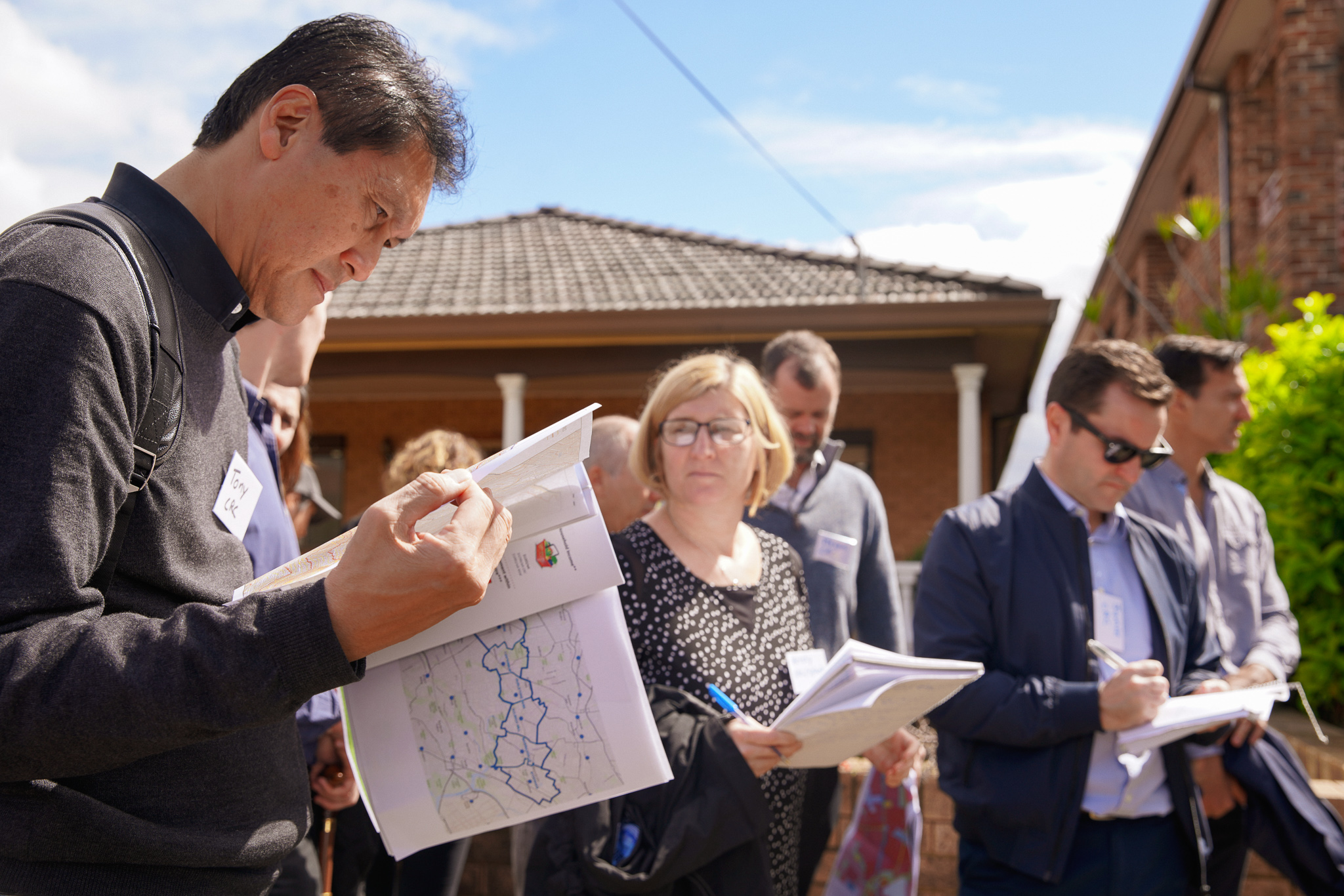CRCWSC helps progress water sensitivity planning for Cooks River
Planning and testing are underway to improve the water quality and integrity of two precincts within the Cooks River catchment, an ecologically significant tributary of Botany Bay and part of the area between Sydenham to Bankstown identified by the NSW State Government for urban growth in Greater Sydney.
At the second of three research synthesis workshops hosted by the Cooks River Alliance and attended by the CRCWSC, Sydney Water and other stakeholders in late November, participants tested a set of 18 planning principles within the Campsie precinct of Canterbury–Bankstown local government area (LGA) and Marrickville within Inner West LGA—two of the four LGAs along the Cooks River.

The 18 planning principles flowed from a nine-point framework, developed at an earlier workshop. The principles consider the corridor scale, and the November workshop saw participants consider how these principles could be applied at the precinct scale, to ensure the process of redevelopment within the Cooks River corridor, and particularly the delivery of water services, secures the vision for the corridor.
While the principles will be finetuned and tailored at a future workshop, they already highlight some of the opportunities for on-ground action:
Circular economy
- Measure performance (i.e. targets) of the water cycle, rather than its individual elements
- Pursue regenerative design by reframing wastes as resources, co-location of land uses and building design
Water servicing
- Defer future augmentations of centralised water services systems
- Preference local scale options; use centralised infrastructure as a last resort
Green grid
- Have the green grid deliver both ecosystem services (amenity, cooling, connectivity) and ecological functions (biodiversity, riparian corridor)
- Pursue greening opportunities where strategically important, whether in private (e.g. setbacks, building designs) or public (linear open space) domains
Waterway health
- Prioritise strategic and collaborative waterway and catchment projects
- Connect the community to their waterways
Flooding
- Plan for resilience
- Balance infrastructure resilience and social resilience to avoid over-reliance on either
Design of the public realm
- Regard streets as key infrastructure to achieve canopy, infiltration and cooling targets
Design on buildings
- Have all buildings part of the catchment topography of the corridor, to harvest water and increase greening
Communities
- Increase water literacy, and encourage water sensitive behaviours, by design
- Enable community interaction with waterways
- Make it easy for community to participate
Governance
- Integrate governance across agencies and disciplines to provide integrated solutions
- Focus on solutions that are best‐for‐community rather than best‐for‐agency
- Ensure governance structures are fit‐for‐purpose.
During the November workshop, stakeholders worked through planning challenges specific to the two precincts, particularly urban heat effect. They also progressed plans to strengthen community connections to the Cooks River and boost the wellbeing benefits from open green space, by reorienting the Campsie town centre and turning development on the Marrickville floodplain back to the river after years of them being oriented the other way.
Since the Marrickville precinct is built on the Gumbarra swamp and is subject to localised flooding, the workshop also considered to what extent and in what form development should occur within the swamp areas.

In addition to Cooks River Alliance representatives and other stakeholders, the November workshop saw participation from CRC staff, researchers and some of our SME partners, including Realm Studios and E2Design Lab.
The Cooks River Alliance is a partnership between councils in the Cooks River Catchment: Bayside, Canterbury–Bankstown, Inner West, and Strathfield. It uses the combined resources, experience, knowledge and skills within the councils and the community to address the complex environmental problems of the Cooks River.
The CRCWSC worked with the Cooks River Alliance throughout 2018, to help improve the water quality and ecological integrity of the catchment as the New South Wales Department of Planning and Environment’s 20-year strategy for the Sydenham to Bankstown Urban Renewal Corridor gets underway.
The long term vision for the corridor is to promote urban renewal and development while protecting neighbourhood character and heritage. The corridor is expected to host 34,500 new homes and 8,700 jobs over the next 20 years.
For more information about our work with the Cooks River Alliance and other stakeholders, contact Kristy Good (CRCWSC NSW Regional Manager) at kristy.good@crcwsc.com.au.